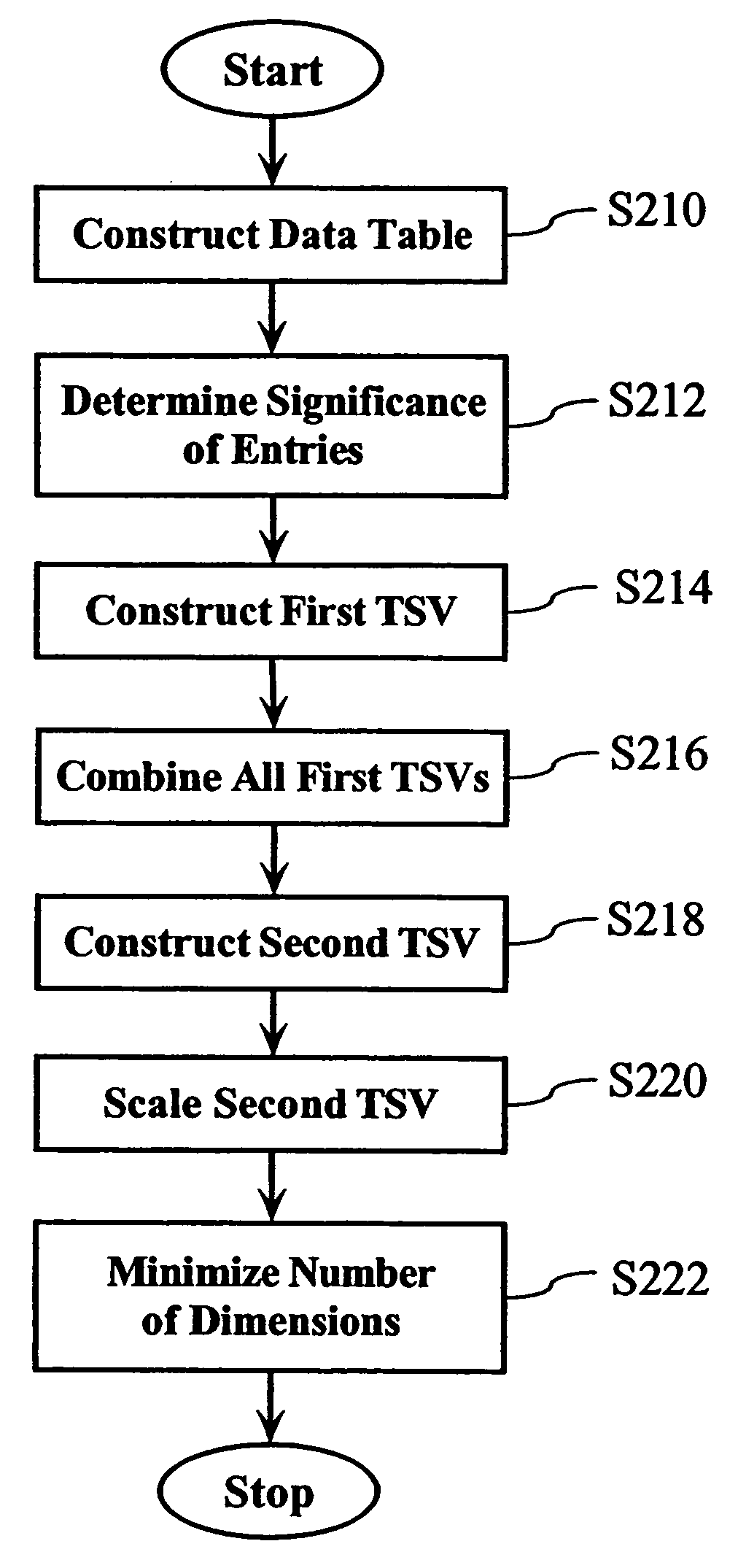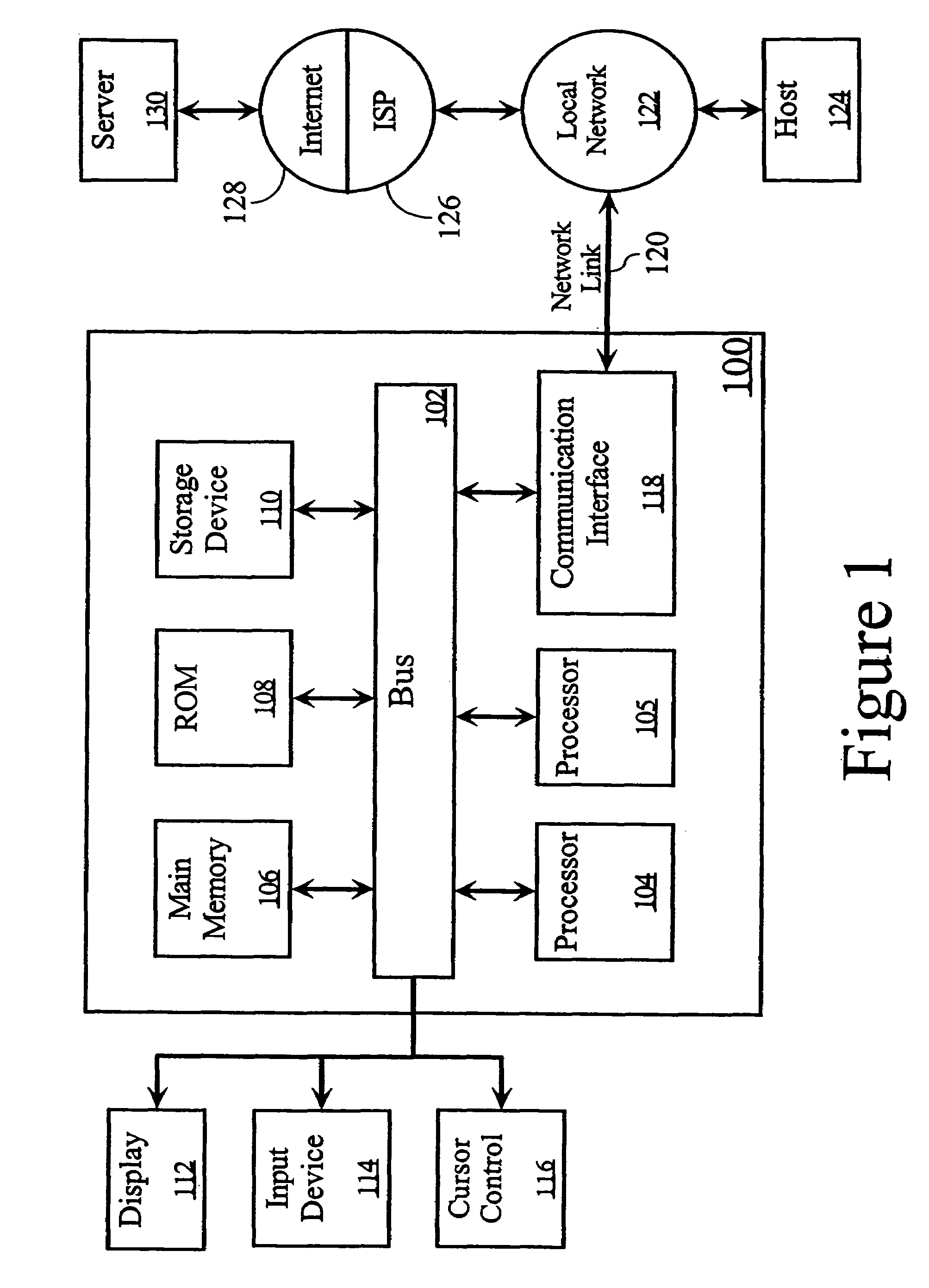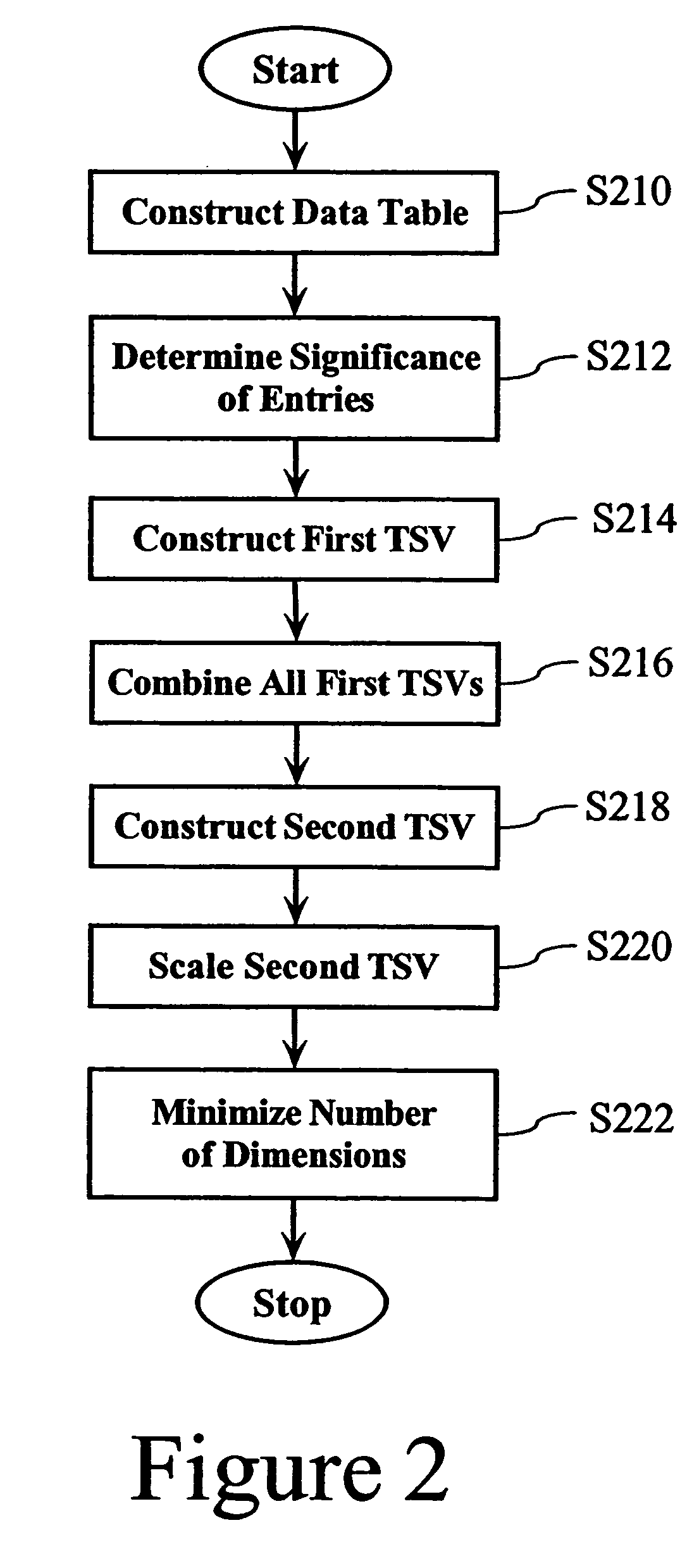Construction of trainable semantic vectors and clustering, classification, and searching using trainable semantic vectors
a semantic vector and trainable technology, applied in the field of information analysis, can solve the problems of complex processes that require massive storage capacity and computational power, system performance is restricted, and system is unable to decipher whether a particular word is used in a different context within a different document, so as to facilitate operations and improve the effect of efficient clustering
- Summary
- Abstract
- Description
- Claims
- Application Information
AI Technical Summary
Benefits of technology
Problems solved by technology
Method used
Image
Examples
example 1
[0105]FIG. 8 illustrates an exemplary representation of words within a semantic space according to an embodiment of the present invention. For simplicity and ease of understanding, the number of words represented in the semantic space and the number of dimensions of the semantic space have been reduced to five. As illustrated in FIG. 8, the table 200 contains rows 210 that correspond to the dimensions of the semantic space, and columns 212 representative of the category corresponding to the semantic dimensions. The actual words represented in the semantic space can be referred to as W1, W2, W3, W4, and W5. Similarity, the categories can be referred to as Cat1, Cat2, Cat3, Cat4, and Cat5. Each entry 214 within table 200 corresponds to a number of documents that have a particular word occurring in the corresponding category.
[0106]Summation of the total number of columns 212 across each row 210 provides the total number of documents that contain the word represented by the row 210. The...
example 2
[0109]Turning now to FIG. 11, a graph is shown for illustrating the manner in which a plurality of words (W1 to W12) can be clustered according to the present invention. For simplicity, the semantic space is defined using only two dimensions, and only twelve words are used. In other words, there are only two categories and each word has a value for that category. The result is a two-dimensional coordinate for each word. Note that documents would be clustered in the same manner as words.
[0110]Referring additionally to FIG. 12, a Table is shown that shown that stores the X and Y coordinates of each word plotted in the graph shown in FIG. 11. During the clustering process, the twelve words are initially distributed among a plurality of clusters. As shown in FIG. 11, four clusters have been defined (C1 to C4). Each cluster contains three words. Since the words were randomly assigned to the clusters, the three words in any of the clusters may not necessarily be similar. Next, centers are...
example 3
[0113]The methodologies of the present invention have been used to semantically represent U.S. Patents issued between 1974-1997 (i.e., approximately 1.5 million documents). The text of the “Summary” and “Background of the Invention”, and US classification was used as the raw data. Any information in the patent could have been used. For example: abstract, detailed description, international class, cross-reference, field of search, etc. The selected sections, however, provided sufficient descriptions of the patent to support accurate classification. The result is approximately 50 gigabytes of text.
[0114]A set of categories, called the Manual of Classification (MOC), already exists for U.S. patents. The problem with the MOC, however, is that it is not very useful for automation purposes. There are about 400 classes at the top level and over 130,000 subclasses at the lowest level. The top-level classes do not provide sufficient detail, while the subclasses provide too much detail. Addit...
PUM
 Login to View More
Login to View More Abstract
Description
Claims
Application Information
 Login to View More
Login to View More - R&D
- Intellectual Property
- Life Sciences
- Materials
- Tech Scout
- Unparalleled Data Quality
- Higher Quality Content
- 60% Fewer Hallucinations
Browse by: Latest US Patents, China's latest patents, Technical Efficacy Thesaurus, Application Domain, Technology Topic, Popular Technical Reports.
© 2025 PatSnap. All rights reserved.Legal|Privacy policy|Modern Slavery Act Transparency Statement|Sitemap|About US| Contact US: help@patsnap.com



